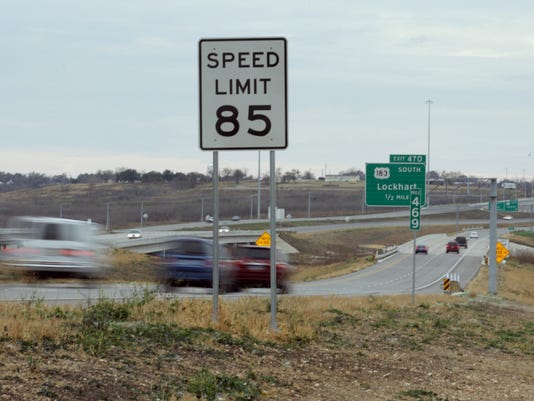 The use of red light cameras is a growing method of law enforcement over the past decade. The high speed cameras take a photo of drivers running red lights. A ticket is then mailed to the residence of the person to which the car is registered. These
The use of red light cameras is a growing method of law enforcement over the past decade. The high speed cameras take a photo of drivers running red lights. A ticket is then mailed to the residence of the person to which the car is registered. These
 cameras have come under attack in the U.S. Opponents of the cameras claim they are unconstitutional because they bypass due process. Proponents of the cameras claim they make the roadways safer. Since this is a class based on science, and not constitutional law, I was curious to the accuracy of the latter argument.
cameras have come under attack in the U.S. Opponents of the cameras claim they are unconstitutional because they bypass due process. Proponents of the cameras claim they make the roadways safer. Since this is a class based on science, and not constitutional law, I was curious to the accuracy of the latter argument.
Red light cameras have two hypothesis that need to be tested. The first is that red light cameras cause a reduction in accident rates. The second hypothesis is that red light cameras cause a reduction in injuries and fatalities.
An observational study conducted by the IIHS rejected the null hypothesis that red light cameras do not reduce injuries and fatalities. Their study look at 99 U.S. cities around the country with a population of over 200,000 people. Of those 99 cities, 14 implemented red light camera enforcement. The IIHS observed accident data from those cities from 1992-1996 (when no cities used red light cameras) and from 2004-2008 (when 14 cities used red light cameras). The IIHS then analyzed “the citywide per capita rate of fatal red light running crashes…” Researches than did a statistical analysis and found that fatal red light running fatal crashes declined by 35% compared to 14% in other cities. The IIHS then estimated, after controlling for land area and population density, the IIHS estimates that the fatal rate of accidents due to red light running in 2004-2008 was reduced by 24%.
There are a few problems with this study. The first is the sample size. Only about 14% of the cities evaluated had red light cameras in use. That is disproportionate to the number of cities without the cameras. The results of the individual cities with cameras have a greater affect on the analysis because there are so few in the camera category (similar to the kids and e-ciggarette study Andrew showed us). Also, although third variables stated to measured, it is impossible to account for all confounding variables in this kind of study. Population type could be a factor for example. According to a Washington Post article, people in the Millennial Generation are driving less than previous generations. Therefore, there were more teen drivers in proportion to the population in 1992-1996 than there are from 2004-2008. Teen drivers are more likely to take risks behind the wheel, and with their diminishing driving habits, there is reason to believe this could have affected the study.
Another, more thorough, observational study published in the Journal of Safety Research found data consistent with the null hypothesis that red light cameras reduce accident rates. The study evaluated 253 signalized intersections in Flanders, Belgium from 2002-2007. During that time period, red light cameras were installed, and researches evaluated the effects. The study displayed a complex statistical method for controlling for trend effects (trends in related injuries in Flanders). Then, researches did a meta-analysis of all the intersections in the study. They found the following:
“The analyses showed a non-significant increase of 5% in the number of injury crashes. An almost significant decrease of 14% was found for the more severe crashes. The number of rear-end crashes turned out to have increased significantly (+ 44%), whereas a non-significant decrease (− 6%) was found in the number of side crashes. The decrease for the severe crashes was mainly attributable to the effect on side crashes, for which a significant decrease of 24% was found.”
This study is well conducted. It has a large sample size, and takes into account trend affects. It fails to reject the null hypothesis that red light cameras reduce accident rates. It does, however, support the the alternative hypothesis that red light cameras reduce severe accidents resulting in fatalities or serious injuries. There could be compounding variables though. For example, in the five year span from 2002-2007, automotive crashworthiness likely improved. The implementation of side airbags became more common in new cars during that time period, which may have affected the rate of serious accidents. Also, the narrow scope in regard to the location may not represent a worldwide or an American population.
I would like to see a thorough observational study conducted that looks at cities’ past insurance claims, crash data, population density, population demographics etc. From there, the chosen, similar cities would be randomly required to implement red light camera enforcement. The study would last only a year to limit the effect of technological advances in automotive safety. From this study, a better conclusion could be made with regard to the hypothesis proposed.

 Growing up, I was forced to wear a bike helmet by my parents and the law. In Pennsylvania, kids under the age of twelve must wear helmets. The reasoning behind wearing a helmet is to reduce risk of head injury in the event of an accident, but like many people, however, I have a distaste for helmets because it ruins my hair. I rarely ride my bike around campus
Growing up, I was forced to wear a bike helmet by my parents and the law. In Pennsylvania, kids under the age of twelve must wear helmets. The reasoning behind wearing a helmet is to reduce risk of head injury in the event of an accident, but like many people, however, I have a distaste for helmets because it ruins my hair. I rarely ride my bike around campus
 that may affect drivers visibility and road patterns, which may affect speed. Also, there is a cultural driving difference in different regions. For example, New England drivers are notorious for their fast and aggressive driving. It would like to see similar studies in different regions.
that may affect drivers visibility and road patterns, which may affect speed. Also, there is a cultural driving difference in different regions. For example, New England drivers are notorious for their fast and aggressive driving. It would like to see similar studies in different regions.

 renowned authors frequently drink is simply second hand, anecdotal evidence to the hypothesis that drinking increases creativity. Although this evidence is helpful, I wondered if any relative experiments were ever conducted.
renowned authors frequently drink is simply second hand, anecdotal evidence to the hypothesis that drinking increases creativity. Although this evidence is helpful, I wondered if any relative experiments were ever conducted.





